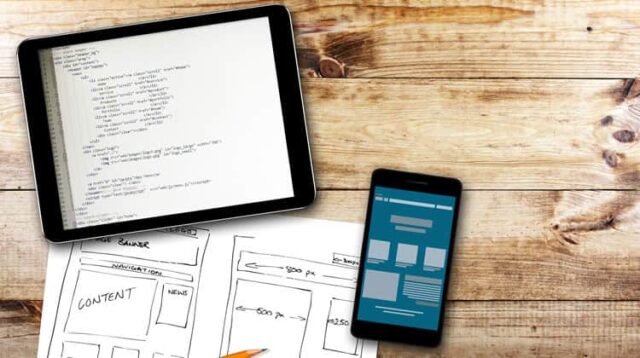A well-designed website is crucial for engaging users, conveying your brand’s message, and driving conversions. However, as user preferences and technology evolve, your website may require a redesign to stay relevant and effective. A successful website redesign can enhance user experience (UX), improve functionality, and ultimately lead to increased traffic and conversions. Here’s a step-by-step guide on how to conduct a successful website redesign focused on better user experience.

1. Define Your Goals and Objectives
Before diving into the redesign process, it’s essential to establish clear goals and objectives. Understanding what you want to achieve will guide every decision throughout the redesign.
- Identify Key Objectives: Consider what specific outcomes you hope to accomplish with the redesign. This might include improving site speed, enhancing mobile responsiveness, increasing user engagement, or boosting conversion rates.
- Align with Business Goals: Ensure that your redesign goals align with broader business objectives. For example, if your business is focusing on increasing online sales, the redesign should prioritize features that facilitate e-commerce transactions.
2. Analyze Your Current Website
A comprehensive analysis of your existing website is crucial for identifying areas for improvement.
- User Analytics: Utilize tools like Google Analytics to gather data on user behavior. Look for insights such as bounce rates, average session duration, and pages with high exit rates to pinpoint problem areas.
- User Feedback: Collect feedback from users through surveys or interviews to understand their pain points and preferences. This direct input can provide valuable insights into what users like and dislike about your current site.
- Competitor Analysis: Analyze competitor websites to identify industry trends and best practices. Look for features that enhance user experience and could be beneficial for your redesign.
3. Create User Personas
User personas represent the various segments of your target audience and their needs, preferences, and behaviors. Developing these personas helps ensure that your redesign caters to the specific needs of your users.
- Demographic Information: Include details such as age, gender, location, and occupation to create well-rounded personas.
- Goals and Challenges: Identify the goals users hope to achieve on your website and the challenges they face. This information can inform design choices and content strategy.
- User Scenarios: Create scenarios that outline how different personas will interact with your website. This helps visualize their journey and identify critical touchpoints.
4. Develop a Comprehensive Plan
With your goals, analysis, and user personas in place, develop a comprehensive plan to guide the redesign process.
- Site Architecture: Create a clear site map that outlines the structure of your new website. Ensure that the navigation is intuitive and that users can easily find the information they need.
- Content Strategy: Review your existing content and determine what should be retained, updated, or removed. Consider creating new content that aligns with user needs and enhances SEO.
- Design Mockups: Work with designers to create wireframes and mockups that visualize the new layout and design elements. This stage allows for feedback and adjustments before development begins.
5. Focus on User-Centric Design
User-centric design principles should be at the forefront of your redesign efforts.
- Mobile Responsiveness: Ensure that your new website is fully responsive and provides an excellent experience on mobile devices. Given the increasing use of mobile for browsing, this is critical for user satisfaction.
- Visual Hierarchy: Use design elements such as size, color, and placement to create a clear visual hierarchy. This helps users easily identify important information and calls to action.
- Accessibility: Consider accessibility guidelines (WCAG) to ensure that your website is usable by all individuals, including those with disabilities. This includes providing alt text for images, ensuring sufficient color contrast, and enabling keyboard navigation.
6. Implement and Test the Redesign
Once your design is finalized, it’s time to implement the changes and conduct thorough testing.
- Development Process: Collaborate with developers to build the new website according to the agreed-upon design and functionality. Ensure that all features work seamlessly across different devices and browsers.
- Usability Testing: Conduct usability testing with real users to gather feedback on the new design. Observe how users interact with the site and identify any areas of confusion or frustration.
- Iterate Based on Feedback: Be prepared to make adjustments based on user feedback. Iterative testing and improvements will help refine the user experience further.
7. Launch and Monitor Performance
Once you’ve implemented the redesign and completed testing, it’s time to launch your new website.
- Pre-Launch Checklist: Ensure that all elements are functioning correctly, including forms, links, and CTAs. Double-check for broken links, spelling errors, and any technical issues.
- Post-Launch Monitoring: Use analytics tools to monitor user behavior after the launch. Track key metrics such as traffic, bounce rates, and conversion rates to evaluate the success of your redesign.
- Collect Ongoing Feedback: Continue to gather feedback from users post-launch to identify any new pain points or opportunities for improvement.
Conclusion
Conducting a successful website redesign focused on better user experience requires careful planning, thorough analysis, and a user-centric approach. By defining your goals, analyzing your current website, creating user personas, and focusing on design principles, you can create a website that meets the needs of your audience and enhances overall engagement.


No responses yet